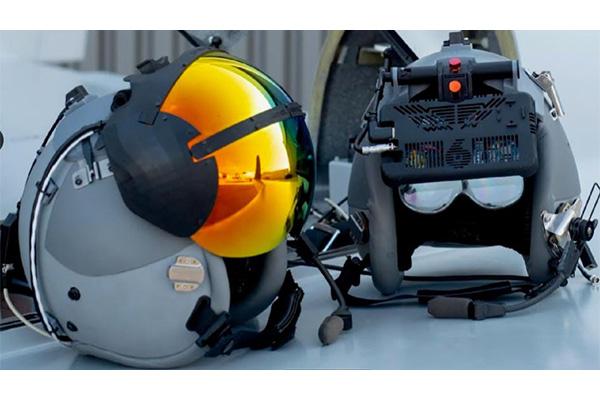
SINGAPORE—Fighter jet training startup Red 6 will fly its augmented reality system on the U.S. Air Force’s principal trainer within the next 12 months, as it also receives interest from foreign companies and militaries for its system, which its says could revolutionize training.
Red 6’s Airborne Tactical Augmented Reality System (ATARS), a virtual reality headset that attaches to a pilot’s helmet and produces synthetic images of adversary aircraft and missile threats, has been bolstered by small business contracts from the U.S. Air Force and tens of millions of dollars of venture capital.
After several demonstrations to Air Force leaders, the company is now on the hook to integrate ATARS on the T-38C Talon for the service’s Air Education and Training Command. CEO Daniel Robinson says Red 6 has finished the first stage of technical engineering and will start installation in the next few weeks. This should be completed and flown within the next 12 months.
As ATARS has picked up momentum, the company has fielded interest from new potential customers. For example, Leonardo has inquired about the system for the M-346 trainer that is used by countries including Singapore for advanced pilot training. Additionally, South Korea has expressed interest in its T-50 because they see it as a “competitive advantage,” Red 6 Chief Revenue Officer Kevin Fesler says.
The company and potential Indo-Pacific customers have been in discussions from a distance because of the COVID-19 pandemic, and Fesler says the Singapore Airshow is a first chance to discuss the system in-depth and in-person.
Beyond a sole pilot flying with one ATARS system, Red 6 wants to create a pilot training “metaverse” by connecting the systems through its new Combined Augmented Reality Battlespace Operational Network (Carbon). This would allow pilots in formations or from a distance to train against the same artificial intelligence-powered simulated threats.
“And with that, we’ve built the first multiplayer video game played outdoors in airplanes,” Robinson says.
Red 6 and the U.S. Air Force are focusing on the T-38, and its follow-on the Boeing T-7A Red Hawk, so that “baby pilots” can begin training for more difficult tasks earlier and on initial training aircraft, as opposed to fourth- and fifth-generation fighters at operational units. For example, Red 6 recently demoed ATARS with a synthetic KC-46 Pegasus. This allows pilots to practice approaching for midair refueling.
Robinson wants to go beyond initial training with the system, however. He said his idea of success for the system is for it to be used in the Air Force’s top exercise, Red Flag.
Even though modern, fifth-generation fighters are developed with a focus on beyond-visual-range combat using advanced sensors and long-range weapons, Robinson says there is still a major need for dogfight training. He is a former Royal Air Force Panavia Tornado pilot who also flew Lockheed Martin F-22s for the U.S. Air Force. Current synthetic systems can only replicate threats through aircraft sensors and not in visual range.
During training exercises such as Red Flag, pilots would “end up at the merge every single day,” Robinson says. This is because pilots can make errors, or sometimes they will be outnumbered, or not all missiles will get to their targets. Pilots then need to be able to train against a high-end adversary, such as a Chinese Chengdu J-20 or Russian Sukhoi Su-57, and the only way to do that would be through augmented reality, he contends.
